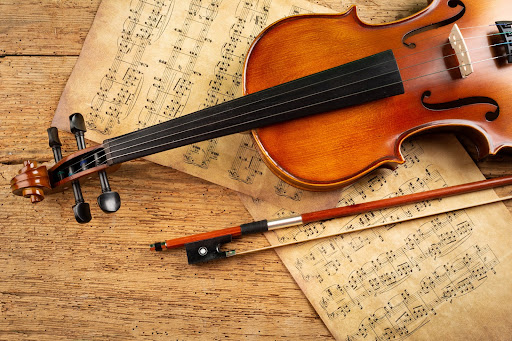Classical Music Month
November 1, 2021
When people think of classical music, their minds usually think of string instruments such as violins and violas, and the popular works of Ludwig Van Beethoven. However, while the Classical period (1750-1820) is the period during which actual classical music emerged, the history behind the musical developments that led to that period goes back much farther. Since September is known as Classical Music Month, here is an in depth look at the history behind Classical Music and its developments, as well as its first appearance.
Classical music’s history, from its beginning to the present, has lasted around 870 years, with the generally accepted beginning being around the year of 1150. Throughout those years, classical music has continued to be prevalent throughout the music industry; however, to a much lesser degree when compared to other styles of music that are relevant today. Oxford Languages defines Classical music as “a piece of music written in a Western Musical tradition,” and is also “generally considered to be serious and to have a lasting value”. On top of all of this, classical music was extremely popular around the time of its first appearance.
Historians generally separate the history of classical music into seven distinct eras: The Medieval Era (1150-1400), the Renaissance Period (1400-1600), the Baroque Period (1600-1750), the Classical Period (1750-1820), the Romantic Period (1820-1900), the Modern Period (1900-1930), and the Postmodern Period (1930-Present). Each of these eras contain key events that drove classical music to the status that it is at today.
The Medieval Period contains the beginning of the Monophonic Chant (a piece with one solo melodic line), along with the playing of some instruments such as the violin and flute, which are still widely played today. More complex classical music pieces appeared in the Baroque Era, which is classified by its major and minor scale systems, rather than the mode system that was in use before then. Johann Sebastian Bach is the most influential composer from this era. The Symphony and Chamber Groups became popular and were brought to audiences during the Classical Period, the period in which Ludwig van Beethoven began his innovations. Beethoven’s works, such as his “Symphony No. 9” defined the Romantic Period, a time where classical music was infused with emotion and drama. The saxophone was also invented during this period.
Of course, classical music is still around and prevalent today, played often in orchestras and symphonies. It has the ability to display and project emotion, go from soft and slow to strong and fast in an instant. It also is capable of being played by a variety of instruments, increasing its range. Overall, these factors all contributed to classical music’s rise in popularity during its first appearance, and today, September is now known as Classical Music Month.

